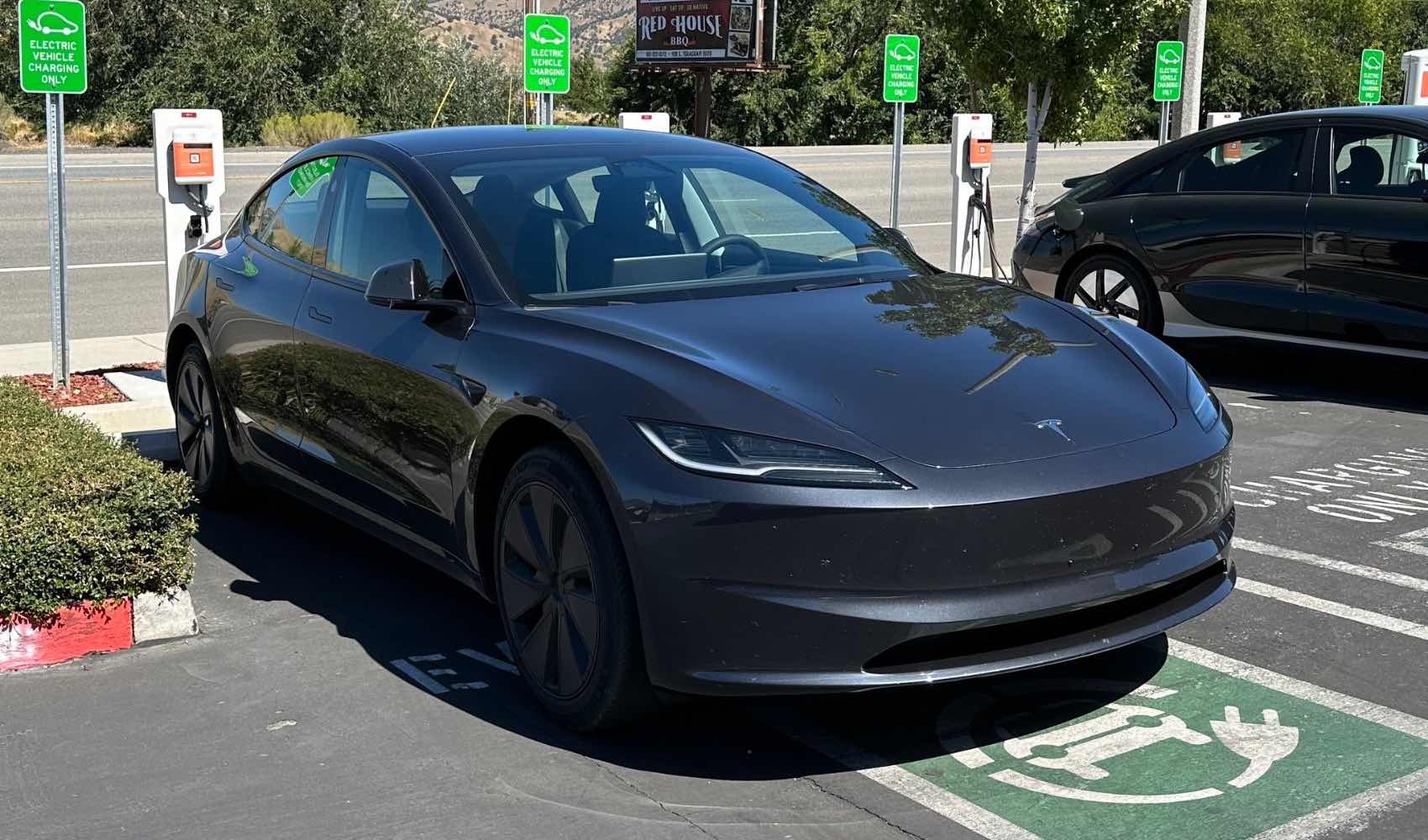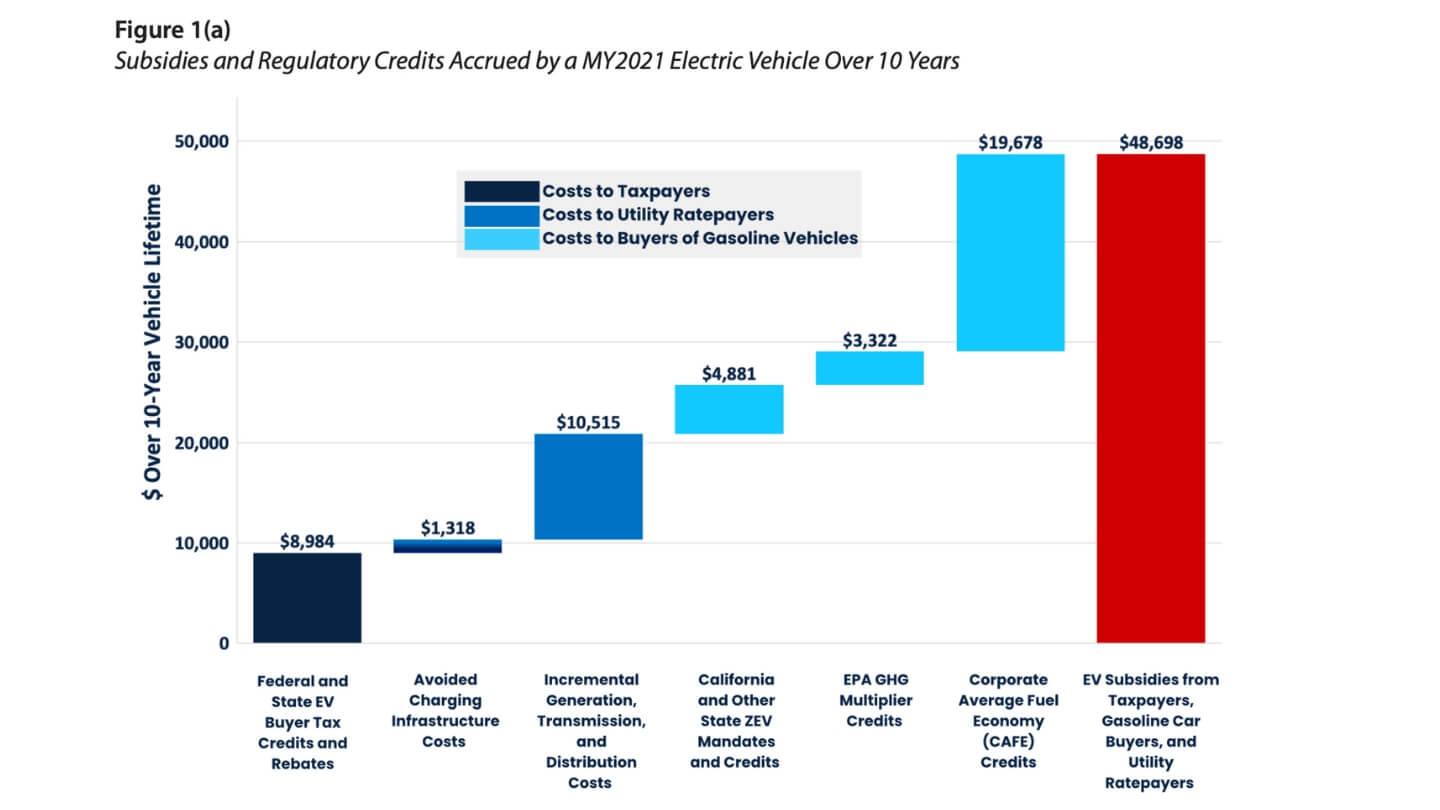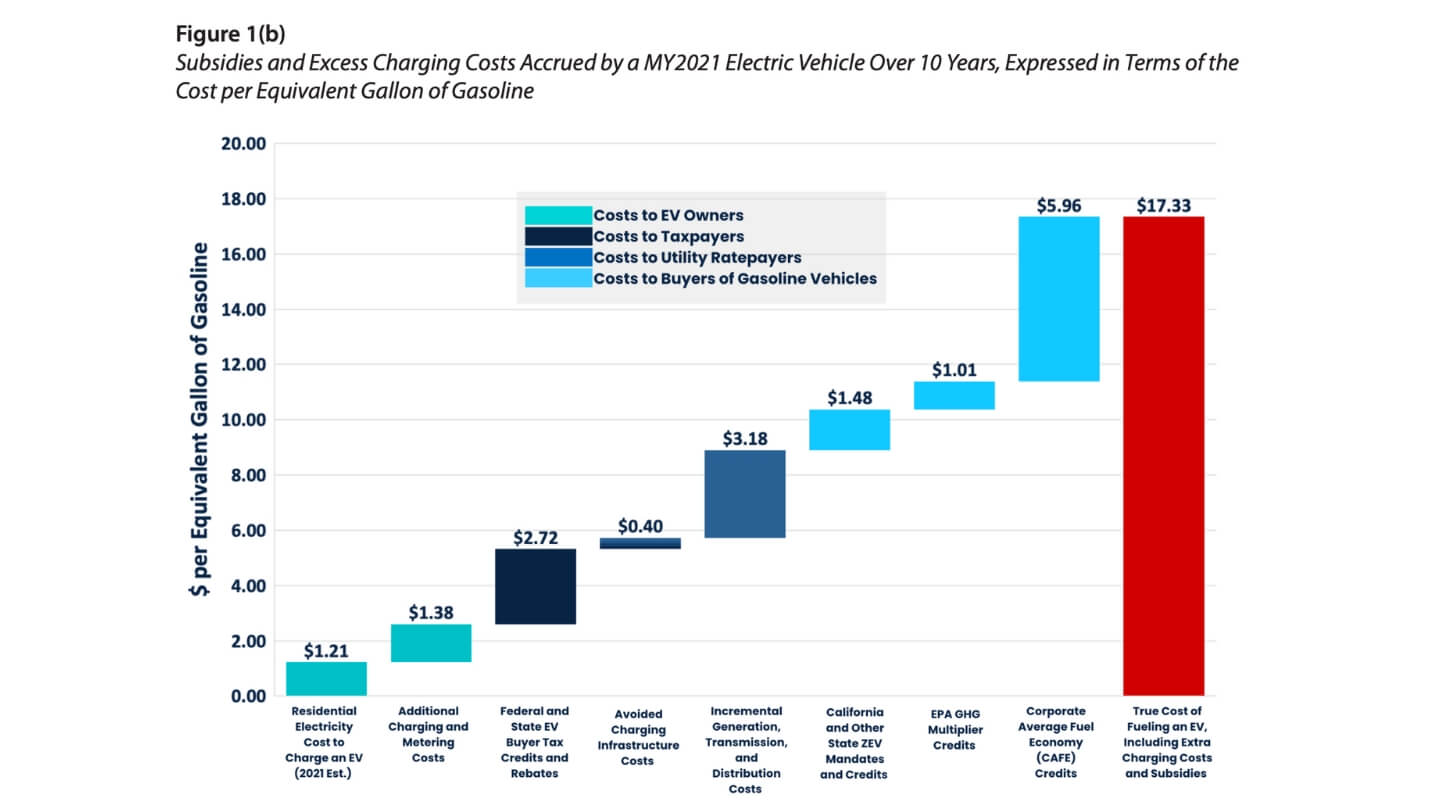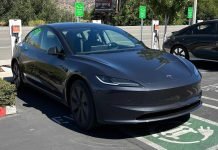In a recent research report by the Texas Public Policy Foundation titled “Overcharged Expectations,” it is argued that electric vehicles would incur a cost equivalent to $17.33 per gallon of gasoline if not for government subsidies. The higher cost includes a wide array of direct subsidies, regulatory credits, and subsidized infrastructure that contribute to the economic viability of EVs.
The report also mentions that EVs are intentionally made cheaper so that they are appealing to the masses. The eye-catching selling prices of EVs are often misleading. In 2021, the average retail price was artificially suppressed by nearly $50,000, thanks to an astonishing $22 billion in federal and state subsidies and regulatory credits. These incentives are a driving force behind the affordability of EVs, effectively making them accessible to the masses.
The exact mention of the report is “It is not an overstatement to say that the federal government is subsidizing EVs to a greater degree than even wind and solar electricity generation and embarking on an unprecedented endeavor to remake the entire American auto industry,”

Fuel Economy of Electric Vehicles
Under federal fuel efficiency programs, EVs receive approximately seven times more credits than they contribute in actual fuel economy benefits. This unlawful multiplier effect further distorts the perceived cost-effectiveness of electric vehicles, perpetuating the belief that EVs are more economical than they truly are.
EV producers benefit immensely from regulatory credits. With the addition of bonus EV multipliers from federal fuel efficiency and greenhouse gas emissions standards, coupled with state EV sales mandates, manufacturers receive an average of $27,881 in benefits per EV. This substantial financial incentive offers a clear explanation of why automakers have jumped on the EV bandwagon.
EV Subsidies Given by the Government
These subsidies, averaging $8,984 per vehicle over a ten-year period, have contributed significantly to making EVs a financially attractive choice for consumers. Unquestionably, subsidies have played a significant role in making EVs an attractive choice. However, when we factor in the true cost of fueling an EV, which includes these subsidies, the scenario takes on a different view. An EV owner effectively pays $17.33 per gallon of gasoline, when all these elements are excluded.
Compared to the average cost borne by other consumers, state and federal subsidies result in an average reduction of $8,984 in the total expense of owning an electric vehicle over a ten-year period.

Another striking feature is that advocates of EVs have promoted the notion that EVs will imminently become more cost-effective than traditional gasoline-powered vehicles. However, this research, as articulated by the study’s author, Brent Bennett, underscores that EVs are yet to attain true competitiveness without substantial subsidies.
Electric vehicle owners have reaped the benefits of a complex web of regulatory credits, subsidies, and the allocation of infrastructure costs that collectively amount to nearly $50,000 per EV. These financial obligations, however, are not solely the burden of EV owners; rather, they are distributed among gasoline vehicle owners, taxpayers, and utility ratepayers.
Public Charging Infrastructure: Added Benefits
The environmental benefits of EVs are undeniable, but the strain they put on the electric grid often goes unnoticed. Home and public charging stations necessitate infrastructure investments and lead to an average of $11,833 in socialized costs per EV over a decade. These costs are ultimately borne by utility ratepayers and taxpayers, highlighting the need for a more holistic approach to EV adoption.

Beyond the straightforward cost of electricity, there are additional factors to consider. The expenses associated with charging equipment and charging losses, distributed over a span of ten years and 120,000 miles, tally up to an additional $1.38 per gallon equivalent. This component adds an extra layer to the financial landscape of EV ownership.
EV Adoption Challenges
Despite substantial incentives, EVs are facing a lukewarm reception from the majority of Americans due to their higher costs. Car dealerships find themselves with an increasing inventory of unsold EVs, as highlighted by Muller in 2023. Moreover, the Ford Motor Company is grappling with losses exceeding $70,000 for each EV it currently sells, as reported by Bryce in 2023.
Batteries are a primary factor contributing to the expense of EVs, and the hope is that breakthroughs in battery technology will lead to price reductions and wider EV adoption.
However, it’s important to acknowledge that these advances in battery technology are not achieved overnight but rather unfolds over decades. The steady decline in lithium-ion battery costs, which characterized the past decade, has largely plateaued.
EV vs ICE: Cost of Ownership
A comprehensive study conducted by a team at Argonne National Laboratory in 2021 sought to scrutinize this argument. Their findings projected that an electric vehicle (EV) with a 300-mile range, corresponding to the model year 2025 (MY2025), would amount to $96,295 in total expenses for purchase, insurance, fueling, and maintenance over a 15-year period, assuming an annual mileage of 12,000 miles (Burnham et al., 2021).
In contrast, a conventional light-duty internal combustion engine vehicle (ICEV) – specifically, a small SUV serving as the reference point – came in at a significantly lower purchase cost, approximately $22,000 less ($28,935 compared to $50,703). However, it’s noteworthy that over the course of its lifespan, the ICEV ended up being only $8,047 less expensive in total cost ($88,248 versus $96,295), primarily due to its higher fueling and maintenance expenditures.
Corporate Average Fuel Economy
Automakers find themselves navigating a high-stakes game governed by Corporate Average Fuel Economy (CAFE) standards. Under the current regulations, those who fall short of these standards are compelled to purchase credits from automakers whose fleets surpass them. The bar for these standards is rising at a rapid pace, far exceeding the typical improvement rate of internal combustion engine vehicle (ICEV) engines, creating a multibillion-dollar market for these credits.
What’s intriguing is the stark contrast in the fuel economy landscape. An electric vehicle (EV) with a 300-mile range, as of 2021, was evaluated at an impressive 113 miles per gallon of gasoline-equivalent (MPGe), while the average for all new light-duty vehicles in the same year was a modest 36.32 MPGe (EIA, 2022). This striking variance serves as a colossal incentive for automakers to focus their efforts on producing more EVs. When compared to the alternative of enhancing the fuel efficiency of ICEVs or promoting the sale of hybrids, the prospect of EVs provides a far more substantial boost.
This behind-the-scenes economic dynamic sheds light on the intriguing forces at play in the automotive industry, where regulations serve as both catalysts and challenges, driving the shift toward cleaner, more fuel-efficient vehicles. As the automotive landscape continues to evolve, these economic incentives will remain a compelling factor for automakers seeking to navigate the complexities of CAFE standards.
Conclusion
A conservative estimation suggests that the average EV accumulates $48,698 in subsidies and an additional $4,569 in charging and electricity costs over a decade. This leads to a total cost of $53,267 or $16.12 per equivalent gallon of gasoline. Even with the presence of substantial government support, EVs continue to face challenges in the marketplace, making the Biden administration’s aspiration of achieving 100% EV adoption by 2040 appear unattainable.
The core lesson derived from this study is that innovation and efficiency are primarily driven by markets, not government intervention. Despite the considerable financial and regulatory advantages extended to EVs, there are over four times more hybrid and plug-in hybrid vehicles registered in the U.S. compared to full EVs (EERE). Toyota’s estimation that the materials needed to manufacture one EV battery could be used to produce 90 hybrid batteries, resulting in 37 times more emissions reductions over their lifetime than a single EV (McParland, 2023), underscores the potential of alternative technologies.



















Terrible BS article. Texas Public Policy Foundation is a hack organization.
Should be Texas Petroleum Promotion Foundation.
Wtf! How do you get to $17 per gallon equivalent? Because I can tell you my Tesla Model 3 is pennies per gallon equivalent! How the F are they getting such a f’ed up number.
What a joke! “Research” on electric vehicles by an organization funded entirely by oil companies. Hahahaha
What a load of crap.
Why don’t you add the trillions of subsidies that the oil companies have gotten for decades.
Big oil BS indeed!!!!
Now do a story about how much gasoline really costs without government subsidies. The oil companies have no shame.
Quick Google search says $12-15/gal without the oil subsidies. So yeah this article is missing a lot of context.
A typical battery pack capable of 250-300 miles (depending on driving conditions) are the equivalent of 2.5 gallons of gas. My energy cost to operate an EV is 5 cents a mile.
Absolute B.S.!!!!!!
Why not calculate the cost per gallon in order to keep gasoline cars running in term of cost of healthcare, environmental damage, inefficiencies, subsidies, military, and international policies, etc?
This stuff should come with a warning that it is not based on facts from reputable sources. I wonder if the author or publisher has ties to big oil
This is an example of the misinformation campaign being waged by big oil against EVs on multiple publications.